Interview with horror author Roberta Eaton Cheadle
Posted: October 14, 2019 | Author: kayelynnebooth | Filed under: Author Profile, Books, Dark Fantasy, Fiction, Horror, Interview, Stories, Writing | Tags: Author Interview, Author Profile, Nightmareland, Robbie Cheadle, Roberta Eaton Cheadle, Through the Nethergate, Whispers of the Past, Writing to be Read |62 Comments
Today my guest is an author who I’ve gotten to know well, because she is a member of the Writing to be Read team, where she writes a monthly blog segment on children’s literature that’s proven to be very popular, “Growing Bookworms”. By day she walks in the world of fondant and children’s fiction, but when darkness falls she transforms into an emerging horror author. But this author doesn’t just emerge, she explodes onto the scene with this month’s release of her first novel length horror tale, Through the Nethergate. In addition, this month she also has a short story appearing in Dan Alatorre’s Nightmarland anthology, and another coming out in the WordCrafter paranormal anthology, Whispers of the Past. I’m really excited to be able to interview her about her experiences with horror, so please help me welcome author Roberta Eaton Cheadle.
Kaye: You started out writing children’s stories with your son, but you’ve recently leaped into the horror realm, which is kind of at the opposite extreme of the spectrum. Was that a hard transition for you?
Roberta: It wasn’t a hard transition for me at all. I have always loved supernatural, horror and dark psychological thrillers so I think this genre comes naturally to me. More recently I have been reading and re-reading a lot of dystopian fiction such as Fahrenheit 451 by Ray Bradbury and The Long Walk by Richard Bachman (aka Stephen King).
I can remember reading my Mom’s copy of Stephen King’s The Shining behind the couch in the lounge when I was ten years old. After that book, I worked my way through the rest of her Stephen King collection and several other adult horror books too.
Kaye: Can you name one thing you have to think about when writing horror that you might not ever think about when writing for children, (or any other genre, maybe)?
Roberta: When writing from the point of view of the victim, I need to imagine their fear and describe this in a way that brings out the same emotion in the reader. When writing from the point of view of the party who sees a ghost or discovers a body, I need to imagine their shock and horror at what they are seeing. To describe the tumultuous feelings that would bubble up inside them at seeing something truly frightening or gruesome.
I would never attempt to scare children or invoke feelings of fear and anxiety in them. My Sir Chocolate books series is my attempt to draw children into a happy and safe world of complete fantasy where good always wins and any less likable characters are drawn into the circle of friendship and become part of the team.
Kaye: When making the move into adult fiction, why did you choose to write horror? What draws you to the genre?
Roberta: As mentioned above, I have always liked supernatural horror. I was drawn to it from a young age even though it scared me half to death when I read both The Shining and Salem’s Lot by Stephen King.
I have also always gravitated towards psychologically disturbing books that make me think such as Roald Dahl’s short stories for adults. I have never forgotten Lamb to the Slaughter about a pregnant woman who kills her husband after discovering he is having an affair. She saved her own skin, and that of her unborn baby, by making the murder weapon disappear in the most innovative way imaginable.
The idea of writing about ghosts came to me while I was writing While the Bombs Fell, a fictional biography about my mom’s life, growing up in the small English town of Bungay, Suffok, during WWII. My extensive research while writing this book led me to discover the history of one of the oldest inns in the town which is purported to be haunted by over twenty ghosts. The little bit of information that is available about each of these ghosts intrigued me, and I decided to write a selection of short stories, each featuring the circumstances leading up to, and the death of, a specific ghost.
As I went along with Through the Nethergate, Margaret injected herself into this story and it took on a whole new direction with her having the power to reincarnate the ghosts.
Kaye: What is the biggest challenge for you in writing horror?
Roberta: I think like many other new writers, my biggest developmental area has been learning to show instead of tell in my stories. I believe I have improved a huge amount in this area. As I came from a non-fiction writing background, I have also had to learn to write more descriptively and really reach into myself and find the whirlpool of emotion my characters are feeling in any given circumstance. These emotions must be shown and not told which takes me back to my first point.
Kaye: Your latest release is a work of horror, Through the Nethergate. Where did your inspiration for this story come from?
 Roberta: As mentioned above, my original idea was to write a selection of short stories, each featuring the death of one ghost.
Roberta: As mentioned above, my original idea was to write a selection of short stories, each featuring the death of one ghost.
As I went along the idea for Margaret with her power to reincarnate ghosts and experience their deaths and pain came along. Margaret has recently lost her parents which gives her heightened sensitivity to the world around her.
At the same time, the idea of having one ghostly master to rule over the others popped into my head and this evolved into the ghostly black dog, or Black Shuck, which is an ancient myth in Suffolk and its surrounds. Legend in Bungay has it that Hugh Bigod, a most evil descendant of the original Normandy invaders and the man who erected Bungay Castle during the 12th century, still haunts the castle in the form of the black dog. The inn around which Through the Nethergate is centred, shares a wall in its cellar with Bungay Castle.
There are four other descendants of the Bigod family who are also alleged to haunt the town in their ghostly carriage drawn by fire breathing horses.
Initially, the reader will believe that Hugh Bigod is the villain of the book, but this is not the case. There is a far greater evil force at work who covets Margaret’s power and who makes Hugh Bigod look quite pathetic and ridiculous in his small attempts at evil.
Kaye: Can you tell me a little about Through the Nethergate?
Roberta: Through the Nethergate is intended to demonstrate to the reader how evil has always existed in our world and how evil forces manipulate human inventions and greed for power and wealth to their own ends. Evil has always existed, and it always will, but there is the counterbalancing force of goodness and the kindness and empathy that exists in an equal number of people. This is a book about faith and my belief that goodness and faith always prevail.
Kaye: If Through the Nethergate were made into a film, who do you see playing the lead as Margaret? Who do you see playing your villain, Hugh Bigod?
This is a tough question for me as I don’t watch movies or television. I will have to base it on my previous experience of movies.
I would choose Drew Barrymore to play Margaret in a similar manner to her portrayal of Charlie (Charlene) in the movie version of Firestarter by Stephen King. She would need to be a few years older, however, as Margaret is sixteen in my book. The mixture of innocence, toughness and a strong will to survive are the qualities in Charlie’s character portrayal that underpin my selection.
For Hugh Bigod I would choose Richard Chamberlain in a mixture of his portrayals of Father Ralph de Bricassart in The Thorn Birds and Captain John Blackthorne in Shogun. In both series he portrays someone who is able to separate himself from the anguish of the people around him and ruthlessly pursue his own ends and survival.
Kaye: The setting for Through the Nethergate is an ancient inn with quite the history. How much historical research went into it?
Roberta: I do a massive amount of research for my books with partial or total historical settings.
Each ghostly character in Through the Nethergate came from a different historical era and I had to do meticulous research into what people wore, drank and ate during those particular time periods, as well as how they traveled and the political agendas and attitudes towards servants, masters, females and religious figures that prevailed at the time of their stories and deaths.
For example, Katharine is a reluctant Benedictine nun who comes from a wealthy background and is forced into Bungay Priory during the 14th century. She is in love with William and conspires to escape her dreary life by running away with him. James Wilson was a Benedictine monk who was the cellarer at Glastonbury Abbey during the 15th century when Richard Whiting, the last Abbot of Glastonbury Abbey, presided. James originates from Bungay where his father was the local blacksmith. Peggy and her husband and child are survivors of the great fire that destroyed much of Bungay in the 17th century. The book also includes other historical figures such as John Collins, the famous Chartist from Birmingham, Countess Elizabeth Báthory de Ecsed, a Hungarian Countess and one of Europe’s most prolific serial killers, as well as Tom Hardy, a highwayman who rode with the infamous Dick Turpin and Amelia Dyer, Britain’s most famous female serial killer.
When featuring real people, I must research their stories in as much detail as possible to ensure I get the facts correct. I usually check between five and ten sources, depending on the amount of information available.
Kaye: You also do a lot of short dark fiction, and have stories included in several dark anthologies. In fact, you have two stories “Last of the Lavendar” and “Missed Signs” coming out this month in the WordCrafter paranormal anthology, Whispers of the Past, and “The Siren Witch”, “A Death Without Honour” and “The Path to Atonement” are featured in Dan Alatorre’s Nightmareland horror anthology, also released this month. Do you prefer writing short dark fiction or novel length horror? Why?
Roberta: I like writing both kinds of story.
Short stories are fun to write, but they are restrictive because of their length of 1 500 to 3 000 words. It can be tough to get all the necessary background and detail into a short story in a clear and concise way. I had to cut quite a lot out of “A Death Without Honour” to get the length and sharpness right. Dan Alatorre was great at helping me with that. Sometimes I struggle to get the ending wound up in a concise and exciting way with short stories, as I did with “Last of the Lavendar”, the ending of which you helped me improve greatly. I like writing for anthologies because I learn so much. I also get a lot of guidance from the experienced editors and also from reading the stories included in the anthologies by other authors. They really are a wonderful learning and growing experience for me.
I have written two novellas now, While the Bombs Fell, and my recently completed A Ghost and his Gold which is about the Second Anglo Boer War fought between the “Boers” [farmers] and the British Empire in the early 19th century. I love the length of novellas because it allows for more detail and depth than a short story, but is still fairly short and concise. I think that modern readers prefer shorter stories due to their busy lifestyles.
Through the Nethergate is my first full length novel and I enjoyed writing it and “seeing” how my imagination could take off and extend to a much longer story.
I am currently 40 000 words into a dystopian novel which will be part of a trilogy about a future world dealing with drastic climate change and the fourth industrial revolution. Trilogies are popular and this idea came along so I thought I would jump right in. I love to experiment and learn about new things.
Kaye: What is your biggest fear? What scares you?
Roberta: Real life scares me. The prospect of climate change wreaking devastation on our planet, overpopulation, poverty and criminality which are changing the way society operates as well as the Fourth Industrial Revolution which will forever change the nature of the working world, these things scare me far more than “monsters under my bed.”
Dystopian novels like 1984 by George Orwell and The Long Walk by Richard Bachman (aka Stephen King) really disturb me, but I can’t help reading them. It is better to be informed than not. Even H.G. Wells gives great insights into the nature of society and how it could evolve in his books The Time Machine and War of the Worlds, which are really frightening.
Kaye: What is the scariest story that you’ve ever read and why do you think it is the scariest?
Roberta: I think 1894 by George Orwell is the scariest dystopian novel I have read. Living in the world he describes is so awful I think people would be better off dead.
The Shining is the scariest supernatural horror book I have ever read. The ghosts in the Overlook Hotel that become visible and can harm Danny and his family are most frightening. The invasion of his father’s mind in order to bend him to the will of the evil in the hotel was terrifying. Stephen King has a way of describing things in such a visual way, you feel as if you are living them with the character in the book.
Kaye: What is the scariest story that you’ve ever written?
Roberta: My short story about Amelia Dyer called “Justice is Served” in the murder mystery anthology, Death Among Us, is quite scary as it is based on a real serial killer who murdered babies.
From a purely fiction point of view, I think “The Path to Atonement” in the forthcoming Nightmareland anthology is quite eerie and chilling. “Missed Signs” from the forthcoming Whispers of the Past is frightening because it is within the realms of probability.
Kaye: What methods do you use to create suspense and make a story scary?
Roberta: I use a slow build up to the deaths as a tool to create suspense as well as a lot of visual descriptions and emotional language. Dialogue and onomatopoeia are good ways of conveying literary “sound effects” and tension in a story.
Kaye: Who is your favorite villain or monster from a horror story or film? Why?
Roberta: My favourite villain is Dracula. I loved his sly intelligence and sneaky ways of manipulating his victims and also the heroes of the book.
Kaye: Is there more dark fiction in store for the future readers of Roberta Eaton Cheadle? What are you working on now?
Roberta: I have recently finished the first draft of A Ghost and his Gold and sent that off to my developmental editor. I am hoping to have it available on Amazon in March/April 2020.
I am also working on book 1 of my dystopian trilogy about a world where drastic measures are required to address climate change and the unemployment caused by the Fourth Industrial Revolution. The first book is called Russian Roulette Anyone? And will probably be available in October 2020. I also hope to participate in more anthologies next year as I really enjoy those.
I want to thank Roberta for sharing with us today. I too have been a fan of dark fiction since a young age, and at one time delved into all works Stephen King. I read The Shining while babysitting one night when I was 15. I was totally immersed in the story and couldn’t put the book down, but I had to call and wake up my mother to talk to me about three a.m. because the story scared me silly. I finished the book before the sun came up though. Although I grew up reading the masters like Stephen King, Dean Koontz, Anne Rice, John Saul, and Peter Straub, doing so set a high bar for the writing of horror.
Roberta gets cudos though for having the nerve to do what I’ve not found the courage to do, the nerve to immerse herself in a world of fear and terror in order to write a novel of dark fiction. You can learn more about Roberta and her books by visiting her on her Amazon Author page or on her Facebook page. You can also learn about her children’s books and her creativity with fondant at Robbie’s Inspirations. And don’t forget to catch her “Growing Bookworms” blog segment on the second Wednesday of every month right here on Writing to be Read.
Kaye Lynne Booth does honest book reviews on Writing to be Read in exchange for ARCs. Have a book you’d like reviewed? Contact Kaye at kayebooth(at)yahoo(dot)com.




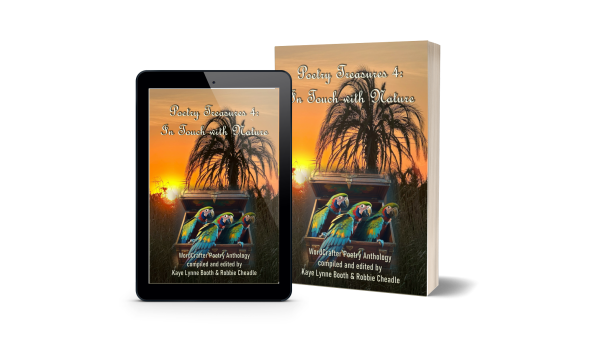
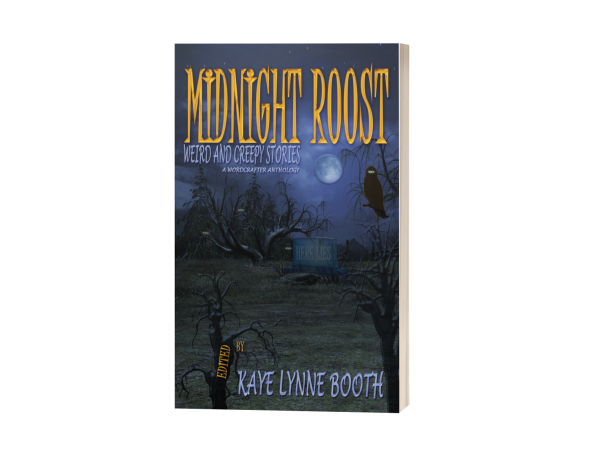



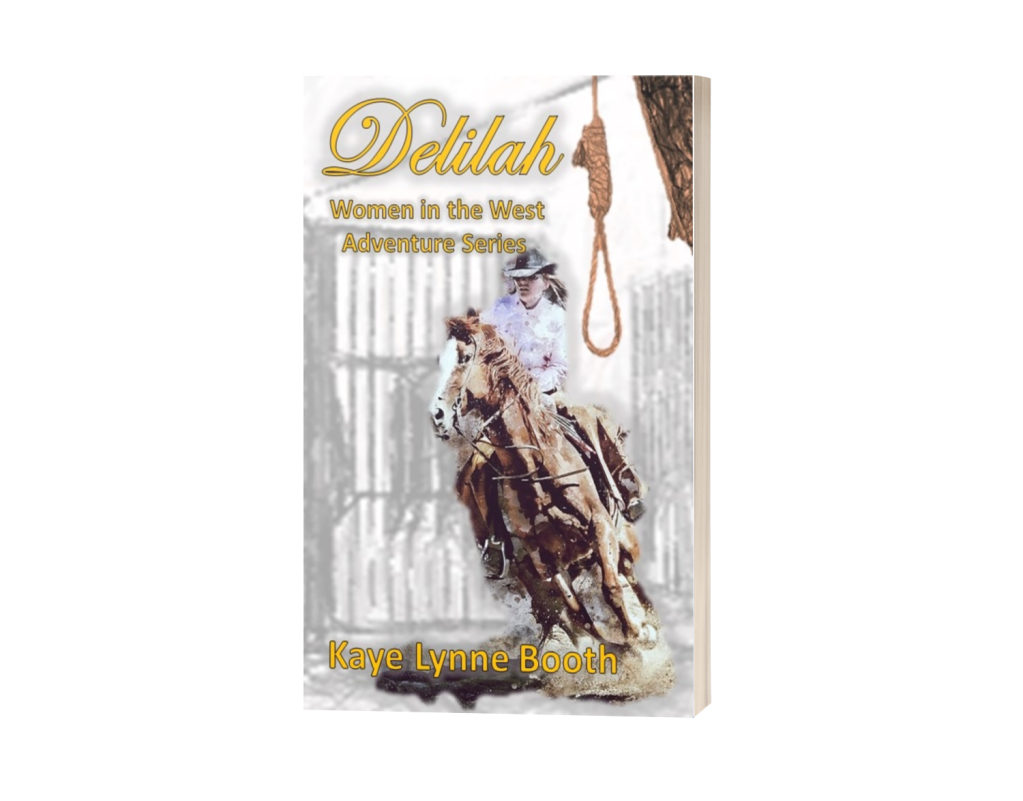
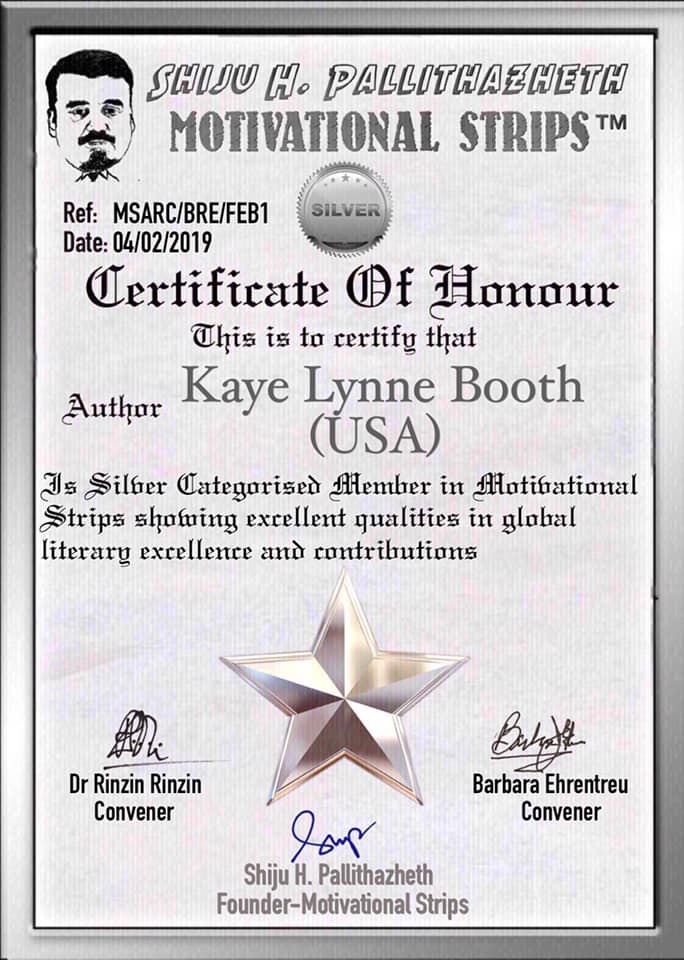
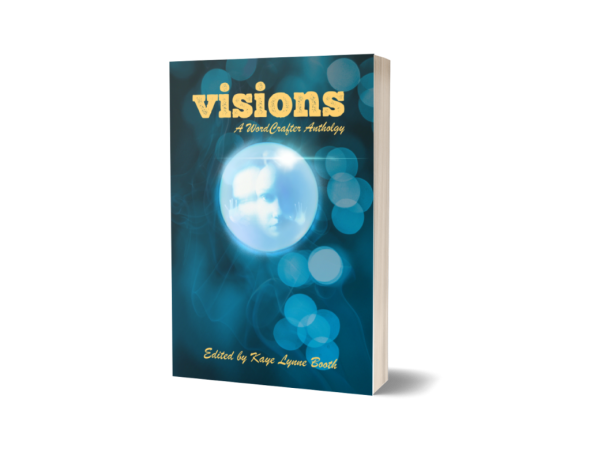


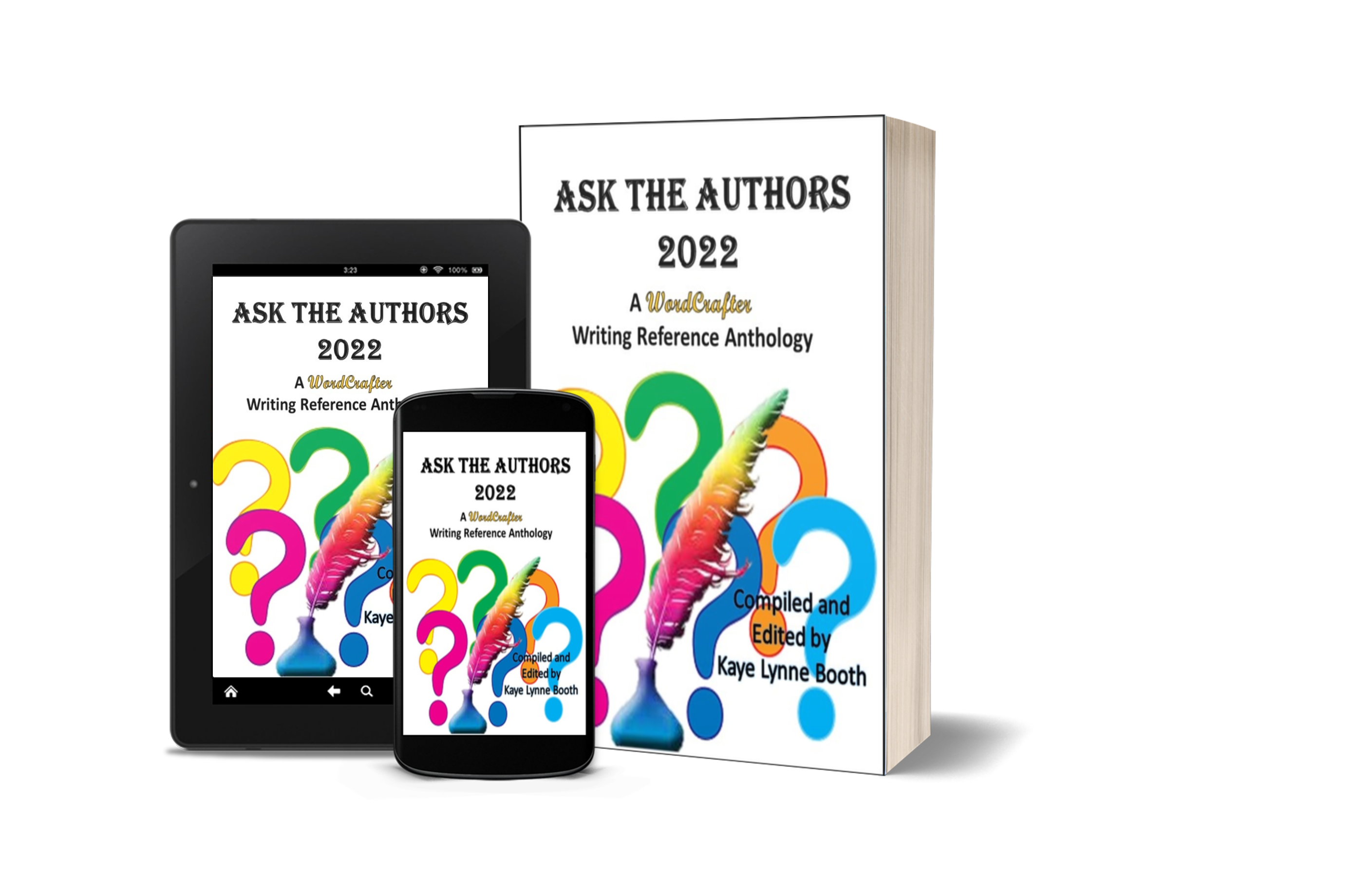
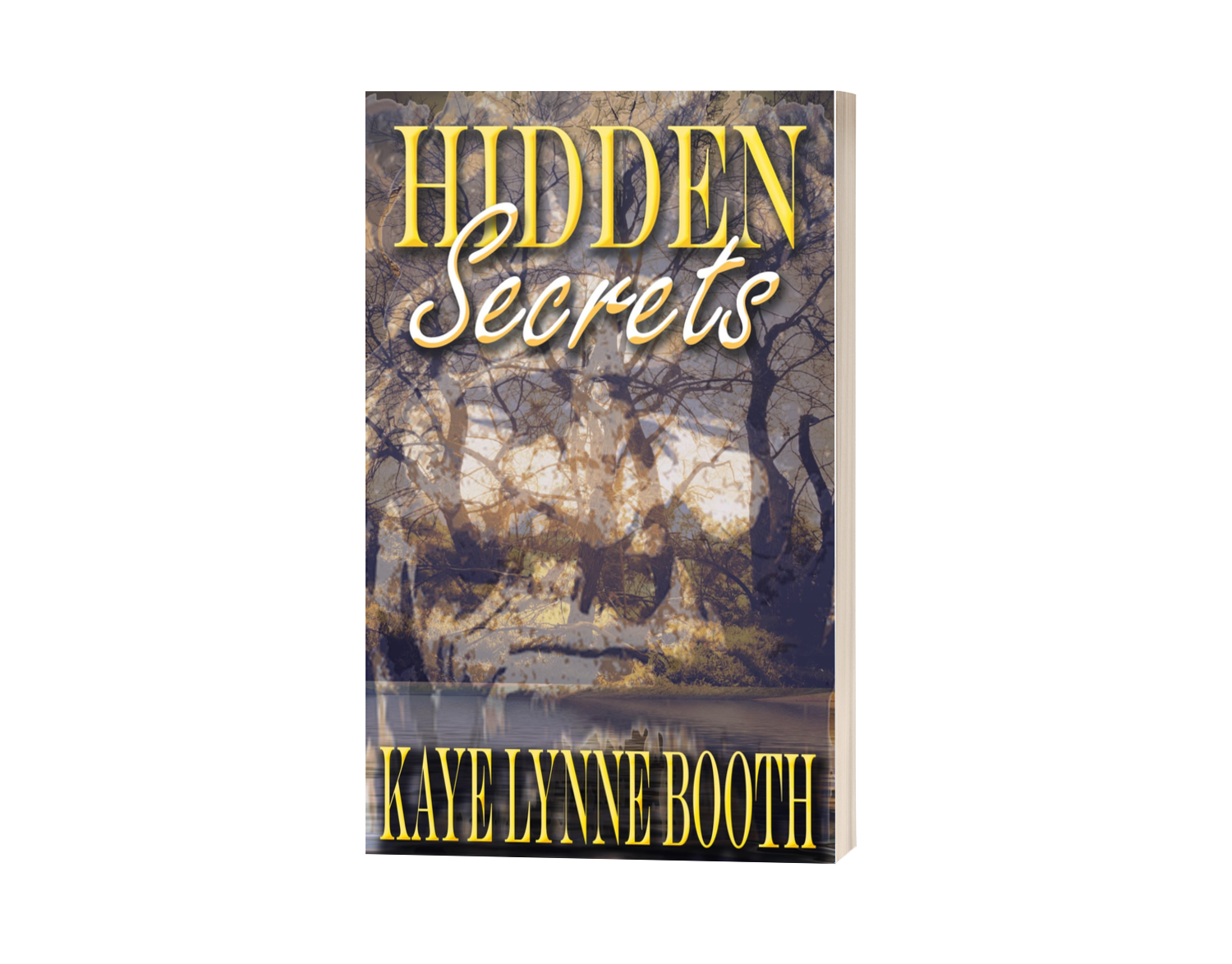
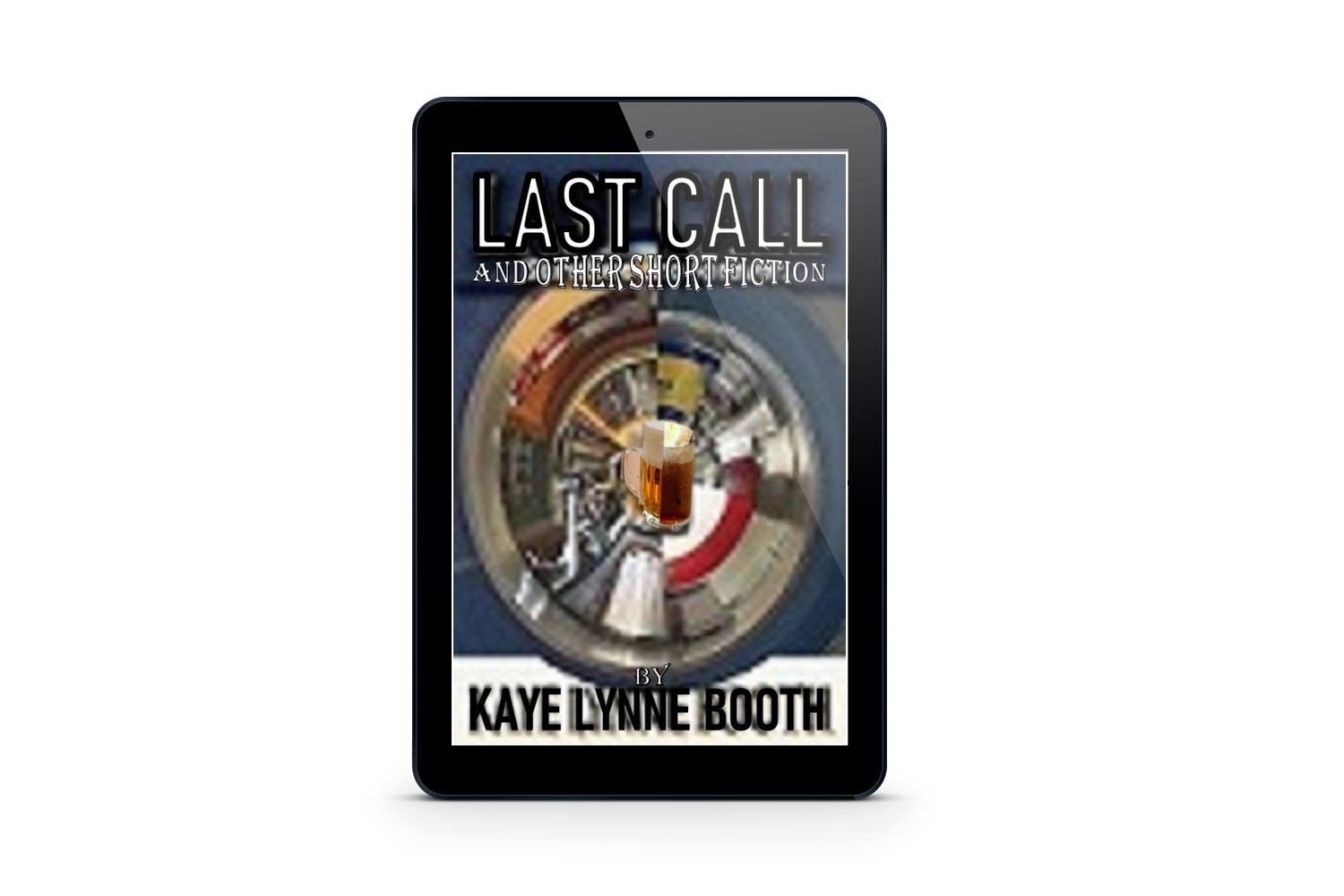
I’m reading this and thinking that Robbie and I have a lot in common! I too am drawn to the horror genre and also have a short story that will be featuring in Nightmareland. It will be my first horror short story I have ever written. I usually write dark YA fantasy. Very enjoyable interview. 🙂
LikeLiked by 1 person
Hi Marje, I saw that you have a short horror story in Nightmareland and I look forward to reading the whole collection when it is published. I am glad you enjoyed this interview. I enjoyed Kaye’s questions which got me thinking about how I ended up writing in this genre and why I like it.
LikeLiked by 1 person
Hi Robbie. Yes I enjoyed writing in the horror genre too. I’ve always been drawn to dark fantasy so it’s not too much of a jump to enter horror! Lol.
LikeLiked by 2 people
Hi Majorie.
Thanks for reading and commenting. I’m glad you enjoyed it. Robbie is a great interviewee as she gives very thoughtful answers. I always enjoy chatting with her.
I have a story coming out in Nightmareland, as well. Seems we are all kindred spirits. Glad to meet you.
LikeLiked by 1 person
Wow that’s awesome. I shall look forward to reading all the stories including yours and both of Robbie’s.
LikeLiked by 1 person
I love Robbie’s work. She invests so much into it, and it shows. Watching her writing grow over the time I’ve known her has been a complete pleasure.
I have no doubts her novel is amazing. Can’t wait to read it – and I LOVE the cover!
LikeLiked by 1 person
Thank you, Dan, I am so delighted you like the cover. When Tim sent it to me, it felt as if he had gone into my mind and pulled out my idea exactly. Thank you for your complement about the development of my writing, I have learned a lot from your guidance and feedback.
LikeLiked by 2 people
I am humbled by such a complement.
You have my email. Send me your cover designers contact information. I might have to hire him!
This is one of many steps on a road that I know you are going to find challenging, frustrating – and extremely satisfying.
LikeLiked by 2 people
I think Tim is a great designer. I will send his contact details for you. I am loving the darker writing. It seems to have brought the best out in me from a writing perspective.
LikeLiked by 2 people
Hi Dan,
Thanks for dropping in. I agree it is an awesome cover for Through the Nethergate, and that Robbie puts a lot into her work. Did you see my review of the book last Friday?
LikeLiked by 2 people
No! I missed it.
LikeLiked by 2 people
https://kayelynnebooth.wordpress.com/2019/10/11/through-the-nethergate-a-supernatural-journey-through-time/
LikeLiked by 1 person
Reblogged this on Dan Alatorre and commented:
Robbie Cheadle does and interview and shows off her latest horror works!
LikeLiked by 1 person
Thank you for sharing.
LikeLiked by 2 people
Thank you, Kaye for sharing this lovely interview. I really enjoyed answering your questions and I appreciate your support and the guidance you offered with my short stories in Whispers of the Past. I am looking forward to reading this book and Nightmareland soon.
LikeLiked by 1 person
I’ve no doubt that both anthologies will be enjoyable. I still have to read the rest of the stories in Nightmareland, too. You are always a pleasure to e-chat with, Robbie. Thanks for being my author guest.
LikeLiked by 1 person
My pleasure, Kaye. I am looking forward to reading both books.
LikeLiked by 1 person
[…] Read the rest of this interview here: https://kayelynnebooth.wordpress.com/2019/10/14/interview-with-horror-author-roberta-eaton-cheadle/ […]
LikeLike
Robbie writes so well, it inspires me to “up” my game as well as entertains.
LikeLiked by 2 people
Hi Annette.
Thanks for reading and commenting. Robbie does indeed write well, and it always helps to have standards to challenge ourselves with. Robbie is inspiration to me too.
LikeLike
Thank you, Kaye, that is very nice of you. I am so pleased you introduced me to the active tense. I am using it in my new book.
LikeLiked by 1 person
Excellent, Robbie. Glad to have been of help. 🙂
LikeLiked by 1 person
Thank you so much, Annette. Your poetry is lovely.
LikeLiked by 1 person
Enjoyed this interview. Thanks Kaye and Robbie! It’s always good to write in different genres. I find it keeps the creative juices flowing.
LikeLiked by 1 person
You are very versatile with your writing, Stevie. I haven’t written that many books so I am just going with the idea that comes along. Horror/supernatural does seem to be my favourite genre for writing.
LikeLiked by 2 people
Thanks Robbie. I’ve enjoyed writing the 2 paranormal books this year. I may do another one next year.
LikeLiked by 2 people
Hi Stevie,
Yes, I enjoy exploring various genres in my writing as well as in my reading selections. The thing about writing in multiple genres is that it can be more difficult to promote your work when you need to reach multiple audiences, but it can be done.
Thanks for dropping by and commenting.
LikeLiked by 1 person
Thanks for sharing this interview. And congrats, Robbie! It sounds like a lot of rigorous work went into producing this intriguing story.
LikeLiked by 1 person
Hi Cynthia, it is more writing effort for me to write a story based on history as there is so much historical fact that must be exactly right. My research is in-depth and thorough. The “made up” bits are much easier to write. Thanks for visiting.
LikeLiked by 2 people
The historical research Robbie does adds so much to her writing, and is always integrated into the story so that it seems natural. Those details are important and add depth. (L
LikeLiked by 1 person
Thank you, Kerfe, I am delighted you enjoy the historical aspects of my writing. I like incorporating the real facts into my stories too.
LikeLiked by 2 people
That was an extremely in-depth interview, very well presented. I appreciate historical research in a novel and I know from what I’ve read of her work in the past, Robbie is a stickler for that.
When I read The Shining, I was older–15–but it still scared the daylights out of me!
I’m looking forward to all of Robbie’s upcoming releases. And it’s nice to meet you,Kaye! 🙂
LikeLiked by 1 person
Kaye is a lovely writer, Mae, and this is a great blog for interesting posts by a variety of different people. The Shining is one of the scariest books I have ever read. I had to stop reading in the early evening and change to something else or I couldn’t sleep.
LikeLiked by 2 people
I still remember the topiary hedges. They scared me more than anything else.
LikeLiked by 2 people
It was the elevator that scared me, Mae. To this day I am terrified of getting stuck in lifts.
LikeLiked by 2 people
I have that fear, too. Maybe it’s from The Shining!
LikeLiked by 2 people
Thank you so much for your comments. Nice to meet you too, Mea. 🙂 So glad you enjoyed the interview. Robbie is a good interview subject.
Most of Stephen King’s works still scare me, as I have read many of them over and over. You don’t have to be young to have horror affect you the way it was intended if it is really well written.
LikeLiked by 1 person
I still get very creeped out today. There are some books I won’t even attempt to read because I know they’ll scare me too much!
LikeLiked by 1 person
What a great interview. We started out the same, Robbie, writing for children and then branching into paranormal/horror stories. I think Stephen King influenced many of us. I know his stories have stayed with me and The Stand was my favorite that I’ve re-read a few times. I can’t wait to read your new book:)
LikeLiked by 1 person
Glad you enjoyed the interview and thank you for your comment.
LikeLiked by 1 person
Thank you, Denise. The Stand is one of my favourites too. My top 3 are The Shining, The Stand and It with Salem’s Lot and Pet Semetary in my top 5. I did notice you have children’s books.
LikeLiked by 2 people
That’s a good top five, Robbie. I would have to add Carrie since that’s my first read of his. Pet Semetary was a hard read for me out of all of them.
LikeLiked by 2 people
I would have to add Tommy Knockers to that list, too.
LikeLike
I also like Carrie, but not as much as these others. I also enjoyed The Dark Half and Misery. Oh goodness, I love them all.
LikeLiked by 1 person
All good adds, I agree:)
LikeLiked by 1 person
Wow! You have been very busy and have accomplished so much. Do you have a favorite ghost from Nethergate? One whose personality appealed to you?
LikeLiked by 1 person
Hi Miss D, my favourite good ghost is Henry Scarle. I have written a characterisation post about him which will go out soon. My most interesting bad ghost is Rex Bacon who murdered his wife and her lover and then committed suicide.
LikeLiked by 1 person
Thank you for the wonderful interview. Michael
LikeLiked by 1 person
It was my pleasure to interview Robbie. Thanks for reading and commenting, Michael.
LikeLike
Thank you for reading and commenting, Michael. Hugs.
LikeLiked by 2 people
Great work, Robbie! Chancing the genre is the difficultiest i think. But you did it in a great, amazing way. Best wishes, Michael
LikeLiked by 2 people
Thanks again, Michael.
LikeLiked by 2 people
Always a great pleasure too me, Robbie! You are my greatest and funniest way for better learning the language too. Michael
LikeLiked by 2 people
I am flattered, Michael. Thank you so much.
LikeLiked by 2 people
:-))
LikeLiked by 1 person
What a great interview. It’s cute how Robbie snuck her mom’s The Shining book and read it behind the couch.:-)
LikeLiked by 1 person
Thank you, Priscilla, I am glad you liked the interview. I was always a determined person.
LikeLiked by 1 person
Glad that you enjoyed it, Priscilla. Just goes to show if a kid wants to read something, they will find a way. Robbie’s mom probably would have let her read it, but many parents are limiting, and I think that works like a forbidden fruit thing, making the child want to read it even more. Thank you for your comment.
LikeLike
Great interview! Real life is frightening, but I like your take on reading the dystopian books – better to be informed!
LikeLiked by 1 person
It is better, Barbara. You can plan for what you know is coming, but not for unexpected surprises. Not all distopian novels end on a negative note either.
LikeLiked by 2 people
That’s true!
LikeLiked by 2 people
[…] Kane’s Arcana and Mariotte’s Cold Black Hearts. In addition, I interviewed author Roberta Eaton Cheadle about her first dark fiction novel and the transition from writing children’s stories into […]
LikeLike